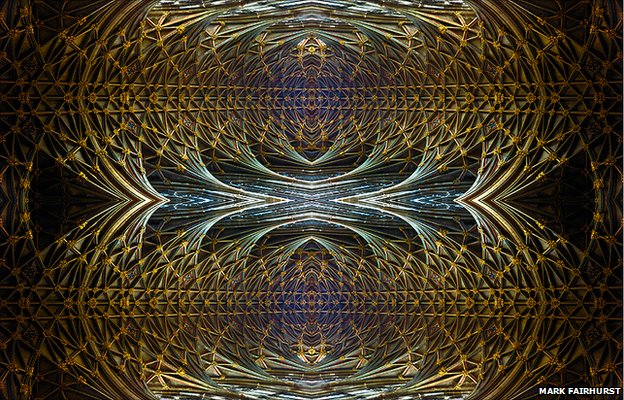On to the National Gallery’s Seduced by Art: Photography Past and Present, where the language of borrowed symbolism from art, or classical and biblical literature opens the door on a style which might be called iconic relating. Here, the influence of the fine art tradition is presented as the “engine for early photographic innovation, and both these precedents inspire present-day photography.”
One of the largest rooms in the genre-divided exhibition is entitled ‘Tableaux’, and features a selection of work identified by their reference to allegorical or narrative themes. Dominant on one wall is Thomas Struth’s National Gallery 1, London, 1989 (1989), which shows gallery goers scrutinizing an early 16th-century altarpiece: a painting of doubting Thomas by Cima da Conegliano, found upstairs in the gallery’s main collection. The zoned spaces of this picture-within-a-picture reveal how, as watching human figures, we invest belief in the physical inhabiting of our environment. The gallery visitors regard the scene with their backs facing us the viewers, and lean in towards it, echoing the figures of the disciples and Thomas himself. In addition, the plane of focus, seen more obviously in the print itself, is horizontal, and at the level of Jesus’ head. In a beautifully realized way, what might be a single trans-spatial line of unbroken, faith-filled sight becomes an embodied searching for the tangible body.
Such tangible bodies are found in Helen Chadwick’s work, particularly her One Flesh (1985), showing a red-cloaked visceral Madonna and Child with a collage of photocopied textures and skin. Seen in proximity to a similar subject represented by Julia Margaret Cameron (Light and Love, 1865), the capacity of photography to reflect the changing place of biblical and Christian iconography in art is apparent: on the one hand the endlessly reflexive mode of a self-conscious postmodernism borrows sign and symbol to cornucopian effect, while on the other, a Victorian sensibility claims an authoritative, if occasionally sentimental, shoring up of moral ideals. Cameron appears elsewhere in the exhibition, in the rooms dedicated to both ‘Portrait’ and ‘Figure’, yet the impact of her more conventional reference to human figure is slight in comparison – here pose and sensibility seem to be the trading cards with art of the past and photography of today (for example with G. F. Watts, and Craigie Horsfield).
Occasionally this linking and labelling of early and contemporary photography with art seems convoluted and tenuous: Jeff Wall is surely under-represented on inclusion of The Destroyed Room (1978, alongside a small copy of Delacroix’s The Death of Sardanapalus) instead of the Tate’s A Sudden Gust of Wind (After Hokusai) (1993). What does succeed overall, perhaps contrary to the lineage-thesis suggested by the curator, is an interdisciplinary examination of subject-treatment. One may well compare, for example, the digitally-constructed Arcadia of Beate Gütschow’s clean landscape LS#13 (2001), with Roger Fenton’s Paradise (1859), a view of an idyllic river scene in Lancashire. Visually, it is a subtle change that distinguishes the “stubborn lyricism” of the former, despite the inclusion of incidental printers’ marks at the edges of the image, from the “spiritual intent” of the latter. Fenton, master of multiple genres in his time (including the stereoscopic still life also seen in this exhibition), embraced a pictorial emphasis in such landscapes that reflected the ideal of the Romantic picturesque. This utopian dream cannot quite be expelled from Gütschow’s image, even as it is riddled with artificiality.
The powerful all-embracing lens of the camera, as so clearly defined in Ansel Adams’ work (see earlier post), turns out to be a distinctively imaginative image-maker. It can leave the trace of cultural turn in nuance or extraneous detail, just as much as it can wield forceful artistic rhetoric in elaborate construction and scene-setting tableaux. It is to be hoped that the spiritual and theological aspects of this capacity become more widely studied in visual culture academia, as a result of the increasing institutional platform offered by such exhibitions as these, for the enrichment of the many postmodern stories of photography.
Quotes from: Hope Kingsley, ‘Seduced by Art: Photography Past and Present’ (London: National Gallery Co, 2012), p.9, 180; and Gordon Baldwin’s essay, “In Pursuit of Architecture,” in Sarah Greenough, ‘All the Mighty World: The Photographs of Roger Fenton, 1852-1860’ (New Haven & London: Yale University Press, 2004), p.59.
Header image: National Gallery I, London 1989, by Thomas Struth.



